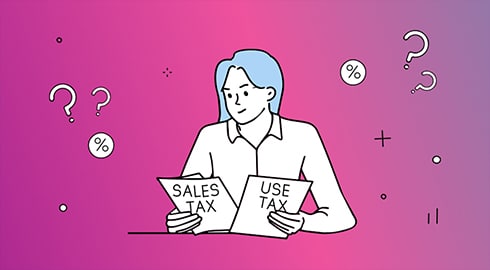SaaS is an industry that’s quickly becoming a staple presence in every organization’s operational and compliance landscape and it’s estimated that 85% of business applications will be SaaS-based by 2025.
And with the growing demand for SaaS solutions and more and more entrepreneurs and investors backing smaller tech companies who solve new problems intuitively, the SaaS field is no longer exclusive to established companies alone. SaaS SMBs are quickly filling the gaps in software subscriptions still left by the larger players.
But with SMBs and startups who are finding their feet in the SaaS market, it can be all too easy to lose focus of the drudgery of administration and compliance while working towards the realization of dreams.
When every decision and every cent of capital plays an important role in the business’s initial growth strategy, you cannot afford the penalties or brand damage that comes with non-compliance. That’s why you need a few simple hacks to make SaaS sales tax compliance simple.
Why is sales tax on SaaS such a complex topic?
As if sales tax compliance wasn’t hard enough when having to navigate the different laws and regulations of so many states. Now SaaS providers have to struggle with the ongoing argument over the very nature of SaaS and how it fits into existing tax laws.
The trouble with SaaS is that it falls into a number of categories: pre-packaged software, custom-made software, and software subscription. So while some states define SaaS as the sale of tangible personal property, others still deem it a service and not a product at all. And each of those categories can be taxed differently in each state.
Currently, SaaS is subject to sales tax in 24 states with 7 states deeming SaaS taxable if software has to be downloaded onto the user’s computer. But as the judicial landscape evolves, more and more states are addressing SaaS and software licensing in their legislation.
Until each state has created dedicated laws, sales tax on SaaS will continue to be something of a gray area, making it difficult for SaaS companies to keep track of their SaaS sales tax obligations.
What are the nexus thresholds for sales tax on SaaS?
A sales tax nexus, which can be defined as a substantial connection with a state, can be created in two ways: through a physical presence or through economic activity.
Now a physical presence nexus remains the biggest trigger for sales tax obligations. If a business is registered in a state, has an office therein, or even has remote employees in a state, a nexus is created. (Note that these are just a few examples of physical nexus triggers.)
But for SaaS providers, whose clients aren’t inhibited by the confines of storefronts or offices, the greater risk comes in with the economic activity nexus. Economic nexus thresholds differ in each state, but are most commonly set at $100,000 in sales or 200 separate transactions.
Now if SaaS is indeed taxable in a state and you have 200 subscribers for your platform, you’ve established a nexus and are required to change your price list or remit sales tax out of your turnover.
How to keep your SaaS sales tax record keeping simple
Sales tax compliance has to be built on a reliable and simple strategy in order to minimize the complexities that already riddle the journey.
Here are the top tips to make compliance a little easier:
Develop a sales tax compliance checklist
Once your product is selling across state lines, you need to create a comprehensive sales tax compliance checklist. This checklist should include the following points:
- Log sales transactions
- Check nexus points
- Register with local tax authority
- Confirm taxability status in nexus states
- Collect, review, and remit sales taxes
- Understand possible exemptions
- File as invoices, receipts, and sales tax records
The key is to keep this checklist updated with the latest legislative updates and sales tax regulations so that it can be used as a single source of truth for compliance.
Separate invoice and sales tax data by state
Ordered administration is the term of the day when it comes to sales tax record keeping. Chronological and alphabetical filing alone is no longer sufficient when working with multiple states. You need to file invoices, receipts, and sales tax data by state to help you keep track of nexus triggers.
Keep your sales tax records for the prescribed period in each state
Just like any other business, SaaS businesses have to keep their sales tax records for the required period … which unfortunately also varies by state. In most states, records must be kept for 3 years, but states such as Connecticut, Oregon, and Rhode Island require businesses to keep records for up to 7 years. That’s a long time to sit waiting for a possible sales tax audit.
And when you’re working with multiple jurisdictions and varying record-keeping periods, it’s easy to see why compliance can unravel into a recipe for disaster.
Act now and automate your record keeping with sales tax software
Simplicity and accessibility are the very core of the SaaS industry, an industry that we’re proud to count ourselves a part of. And that’s why we know just as well as you that there is always a better way to do things.
Complyt helps you automate every step of the record-keeping to keep your business sales tax audit-ready and prepared for the inevitable growth of your SaaS business. But we also simplify every step that comes before that as well, making sales tax calculations, sollections, remittance, and exemption confirmations a hands-free journey.
So get in touch with the Complyt sales team and let’s show you how we can make your record-keeping and tax compliance a breeze.









